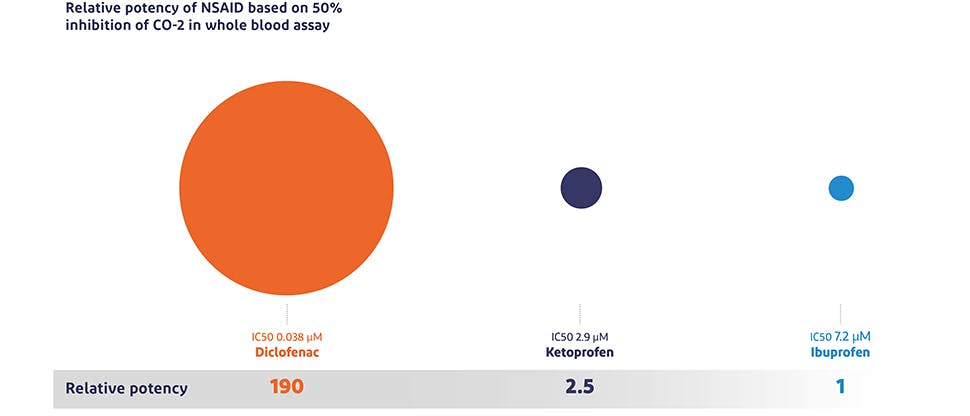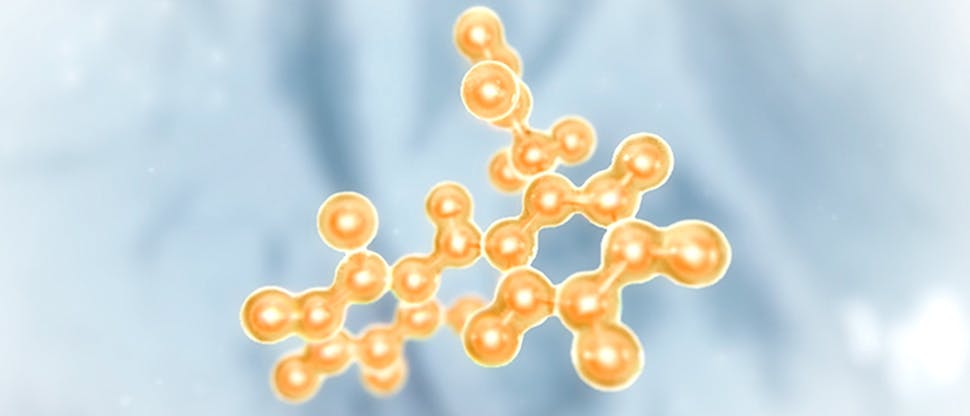Iodex Ultragel+ Science - Diclofenac
Acts through cyclo-oxygenase-2 (COX-2) inhibition, striking inflammation at its source
Learn how diclofenac reduces inflammation by inhibiting prostaglandin biosynthesis through action on the COX enzymes with selectivity for COX-2, and inhibiting phospholipase A2 activity to reduce the production of inflammatory leukotrienes.1,2,4

Diclofenac is a potent anti-inflammatory agent1
Its effect on the COX-2 enzyme means that, unlike non-NSAID medications such as paracetamol, diclofenac not only provides pain relief but also treats inflammation – a root cause of pain.2,4
Diclofenac, an NSAID (and therefore in the same drug class as ketoprofen and ibuprofen), shows marked potency in its inhibition of the COX-2 enzyme.5
Diclofenac targets inflammation to strike pain at its source
Diclofenac-containing products

Iodex Ultragel+ 2.32% Emulgel
Iodex Ultragel+ contains 2.32% diclofenac diethylamine and is clinically proven for joint pain relief.2,6
Indicated for relief of pain and swelling in soft-tissue injuries and localised forms of soft-tissue rheumatism, and relief of non-serious arthritis of the knee or fingers.2
Diclofenac – a potent anti-inflammatory ingredient1

Skin Hydration and cooling effect produced by the Voltaren vehicle gel
Evidence based review in more than 3000 patients shows topical Diclofenac effective & well tolerated in painful and inflammatory conditions

Topical vs systemic non-steroidal anti-inflammatory drugs (NSAIDs): a guide to clinical practice
Watch Dr Martin Johnson, GP, review the mechanism of action of NSAIDs and compare the benefits and potential drawbacks of topical versus systemic formulations.
.png?auto=format)
